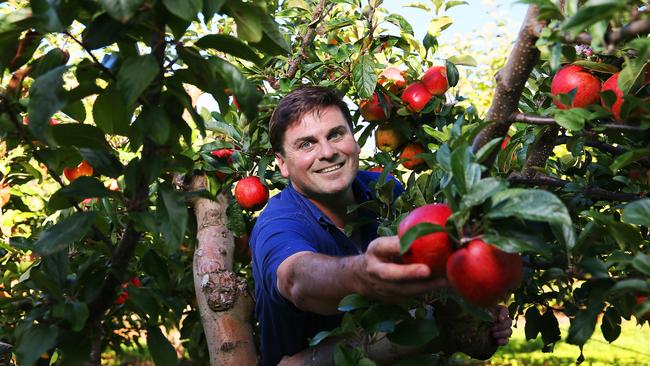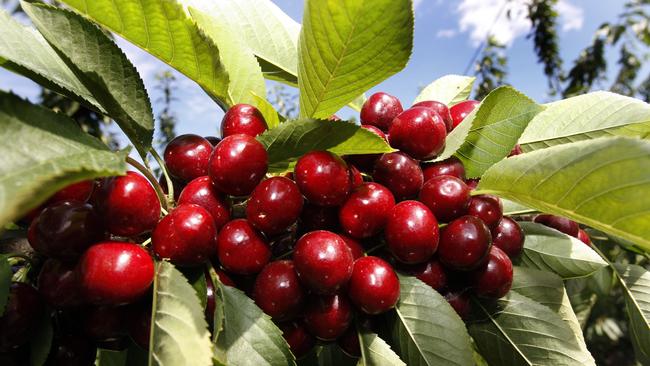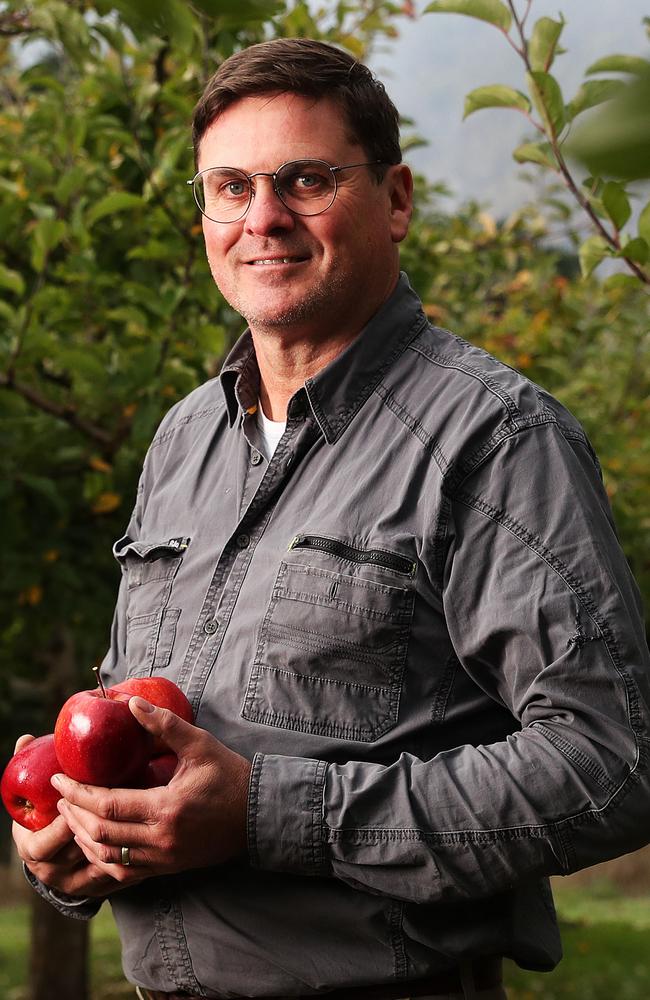Bush summit: Tasmania fruit industry cherry ripe for growth, but this is what’s holding it back
Tasmania is renowned across the nation as having world-class fruit: cherries, berries and apples chief among them. It’s a top performing industry, poised for growth – so what’s holding it back?

Bush Summit
Don't miss out on the headlines from Bush Summit. Followed categories will be added to My News.
Like many others around the country, inflation has put a significant strain on business for apple and cherry grower Dane Griggs from BW Griggs & Sons in the Huon Valley.
Soaring prices on petrol, packaging and shipping costs has meant that instead of focusing on the job of growing for the sixth-generation orchardists, budgeting is central.
“The last few years have been a bit tougher,” Mr Griggs said.
“As a farmer you’re a price taker, not a price maker because we are set by what prices are in the market.”
The pressure is on Mr Griggs to ensure that growing production costs are covered by returns from fruit sales.
Increased shipping costs also prevent the Griggs’ business from expanding interstate – the costs of shipping across Bass Strait are simply too steep.
“Tasmania in general is competing with mainland growers who don’t have extra freight costs to contend with. Bass Strait is one of the most expensive strips of water to get over,” Mr Griggs said.
“The Tasmanian Freight Equalisation Scheme tries to assist with this, but it is still challenging to compete with fruit pricing interstate, especially with a saturation in the apple market nationally.”

A crowded apple market also inspired the Griggs’ move into the rubigold apple variety, making them the only grower of the variety nationally – a way to differentiate themselves in a busy market.
Cherry growing is also a recent feat for the family-owned business, with the lull in the summer season for apples and lower shipping costs for cherries leading to a rapidboost in finances– the international market significantly boosting their sales.
“At the moment, our production is only around 90 per cent apples, 10 per cent cherries, but we’ll probably look at planting more cherries than apples in the future,” Mr Griggs said.
“We currently have more buyers than we do fruit so it’s been a good decision financially. A lot are buyers in Asian markets like China, Taiwan, and Singapore.”
While moving to international markets is helping fruit growers to keep their heads above water, Mr Griggs believes that to see real growth in the fruit sector, more needs to be done to “market to the public”.

“It’s all right for industry to grow and grow more, but you have to be selling that product and there has to be enough demand to be able to create a sustainable return,” he said.
“You need that demand to get bigger – we can always grow more, but consumers need to be aware of the benefits of fresh food.”
Tasmania’s fruit industry is the state’s third largest agricultural sector and fastest growing over the last decade with a farmgate value of $370m.
Fruit Growers Tasmania CEO Peter Cornish says what the fruit industry really needs for growing success is people, building on the more than 10,000 it already hires.
“People are the Tasmanian fruit industry’s biggest strength and biggest weakness,” Mr Cornish said.
“To pick Tasmania’s fruit each year, we need more than 8000 people – several thousand backpackers and even more people from the Pacific Islands and Timor-Leste are crucial to the success of our industry. But people are the industry’s biggest expense and rules around migration, international workers and awards are getting more challenging and the cost of all workers is going up.”
Again, the embattled fruit industry’s rising costs and relatively low return for fruit hinders growth for the sector, Mr Cornish said.
Added costs like an average $150,000/ha in infrastructure spending prevent strong financial returns, he said.
Mr Cornish also agrees that hefty transport costs is another significant strain for industry.
“The Tasmanian Freight Equalisation Scheme helps, but not as much as it did in the past,” Mr Cornish said.
There are positive signs. Mr Cornish said that 70 per cent of all Australian cherry exports are grown in Tasmania, helping to bolster funds for the industry.
Berry crops continue to be the largest in Australia, particularly for blackberries and raspberries where Tassie tops the crops, and the state is the second-largest producer of blueberries.
“The Tasmanian fruit industry has faced challenges throughout its 170 years of existence and it will face the current ones too,” Mr Cornish said.
“Underpinned by a fresh, vibrant taste experience with flavour that lasts, the Tasmanian fruit industry will keep telling its stories of success.”




